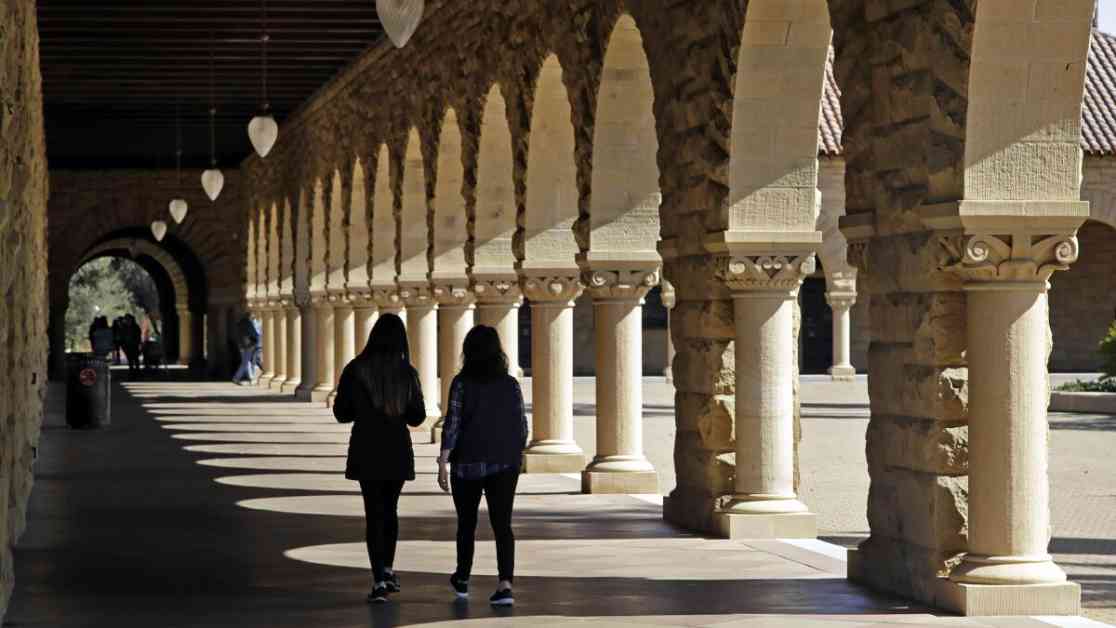In 2022, Stanford University faced a wave of criticism for its “Elimination of Harmful Language” initiative, which sought to discourage the use of certain words and phrases deemed offensive or harmful. The effort, led by campus experts, aimed to promote inclusivity and respect through language choices. However, the initiative quickly sparked controversy, with many on the political right decrying the perceived censorship and overreach of the university’s guidelines.
The list of banned words and phrases included not only clearly derogatory terms but also seemingly innocuous ones like “immigrant,” “grandfather,” and “Hispanic.” The rationale behind these restrictions was to promote sensitivity and avoid unintentional harm. However, critics argued that such measures stifled free speech and imposed unnecessary restrictions on expression.
Conservative voices, including The Wall Street Journal editorial board and Stanford Professor Jay Bhattacharya, expressed outrage at what they saw as an infringement on academic freedom and individual rights. The decision to remove the website following intense backlash highlighted the tension between promoting inclusivity and upholding the principles of free speech.
Fast forward to the present day, and the debate over language restrictions has resurfaced in a new context. The Trump administration’s efforts to discourage the use of certain words and phrases in federal agencies and policy statements have reignited concerns about censorship and ideological control. By targeting words like “accessible,” “female,” and “political,” the administration has raised questions about the limits of acceptable speech in government settings.
While the motivations behind these actions may differ, the underlying issue of balancing inclusivity with free expression remains at the core of the debate. The clash between those advocating for diversity, equity, and inclusion (DEI) and those pushing back against perceived censorship underscores the complex interplay between language, power, and ideology in our society.
The Limits of Language: Navigating the DEI Debate
One of the key criticisms leveled against initiatives like Stanford’s harmful language list and the Trump administration’s word restrictions is the potential chilling effect on open discourse. By dictating which words are acceptable and which are not, these policies risk stifling meaningful conversations and limiting the diversity of perspectives in academic, governmental, and corporate settings.
The tension between promoting inclusivity and protecting free speech is a perennial challenge for institutions grappling with issues of diversity and equity. While the intention behind language guidelines may be laudable, the unintended consequences of stifling dissenting views or alternative perspectives can have far-reaching implications for intellectual freedom and academic inquiry.
Moreover, the backlash against perceived censorship often fuels a cycle of counter-restrictions, as seen in the Trump administration’s efforts to push back against what it perceives as “woke” ideology. This tit-for-tat dynamic only serves to deepen the divide between competing visions of social justice and individual rights, further complicating efforts to find common ground on contentious issues.
As the debate over banned words and speech restrictions continues to unfold, it is essential to consider the broader implications for academic freedom, democratic values, and the pursuit of knowledge. By engaging in thoughtful dialogue and respecting diverse viewpoints, we can navigate the complexities of the DEI debate with nuance and empathy, fostering a more inclusive and intellectually vibrant society for all.
Charting a Path Forward: Reconciling Diversity and Free Speech
In the midst of heated debates over language restrictions and ideological control, it is crucial to seek common ground and bridge the divide between advocates of diversity and defenders of free speech. Finding a balance between promoting inclusivity and protecting individual rights requires a nuanced approach that respects the complexity of these issues and acknowledges the legitimate concerns on all sides of the debate.
By fostering a culture of open dialogue, mutual respect, and intellectual humility, we can create spaces where diverse perspectives are welcomed, dissenting voices are heard, and meaningful progress toward a more just and equitable society is possible. Rather than resorting to censorship or silencing opposing views, we can embrace the richness of our differences and work together to build a more inclusive and democratic future for all.
As we navigate the challenges of the DEI debate and confront the limitations of language in shaping our understanding of the world, let us remember the power of dialogue, empathy, and shared humanity in transcending ideological divides and forging a path toward a more just and equitable society for generations to come. Together, we can chart a course that honors the complexity of our shared experiences and values the dignity and worth of every individual, regardless of background, belief, or identity.














